Redesigning Event Management for Seamless Conversion and Growth
Evvnt's acquisition created a unique opportunity to expand its market presence and introduced the challenge of integrating a ticketing and commerce platform with its existing marketing platform. To position Evvnt as a comprehensive event management solution and compete with larger industry players, we led a strategic initiative to unify these products and enhance the overall customer experience.
My Role
- UX Strategy
- User Research
- UX Design
Team
- CTO/CPO
- Full-Stack Engineers
- UI Designer
Duration
- 2 Years (part-time)
Facilitating Cross-Functional Collaboration
To build a shared vision across departments, we conducted lean, interactive sessions with stakeholders from sales, customer success, and engineering. These sessions surfaced key integration challenges, highlighted overlapping features, and pinpointed friction points in the user experience.
Research-Driven Insights Identifying Friction in the Customer Journey
Our user research process took a multi-faceted approach to deeply understand user needs. We gathered cross-functional insights from internal stakeholders to incorporate diverse perspectives and align on key challenges.
To complement this, we conducted in-depth user interviews to capture firsthand experiences and pain points. We also analyzed Net Promoter Score (NPS) feedback to measure customer satisfaction and identify areas for improvement, ensuring our design decisions were data-driven and user-focused.
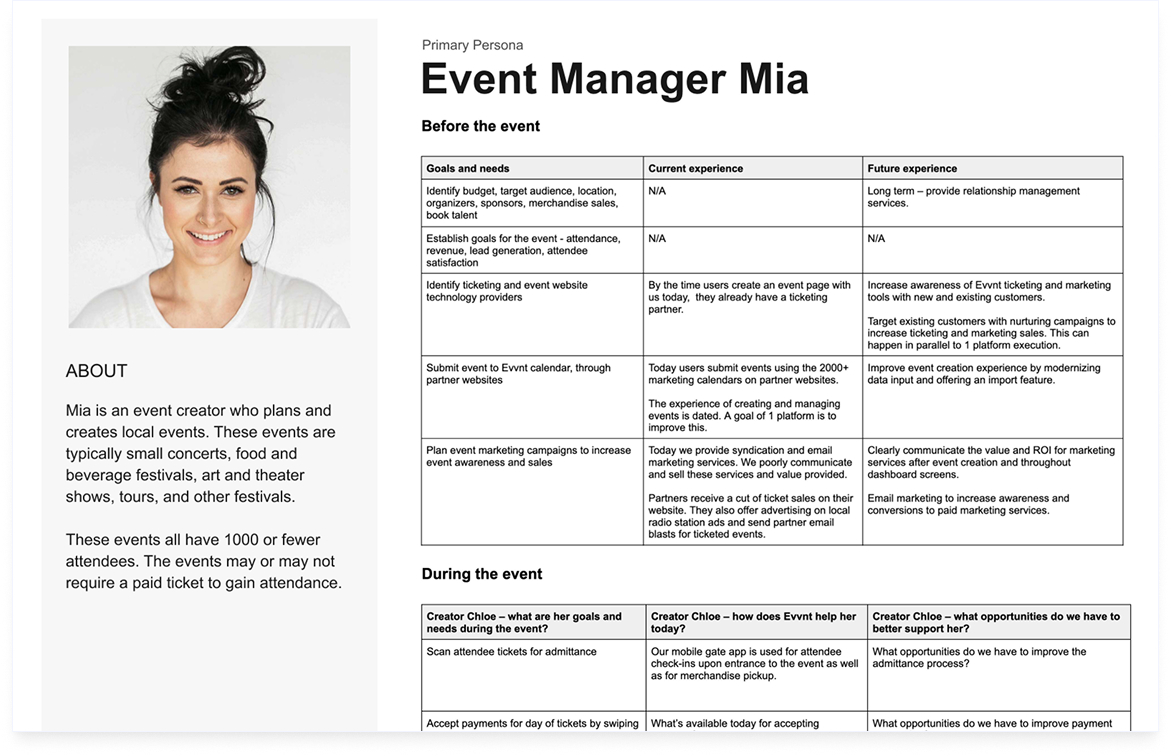
Mapping Current and Future-State User Flows
To shape the future platform experience, we developed detailed task flows for key Jobs-to-be-Done across ticketing and marketing. Through iterative stakeholder workshops, we refined the journey map to ensure a unified, technically viable vision. This collaborative process integrated insights from multiple teams, fostering alignment and driving consensus on the platform's evolution.
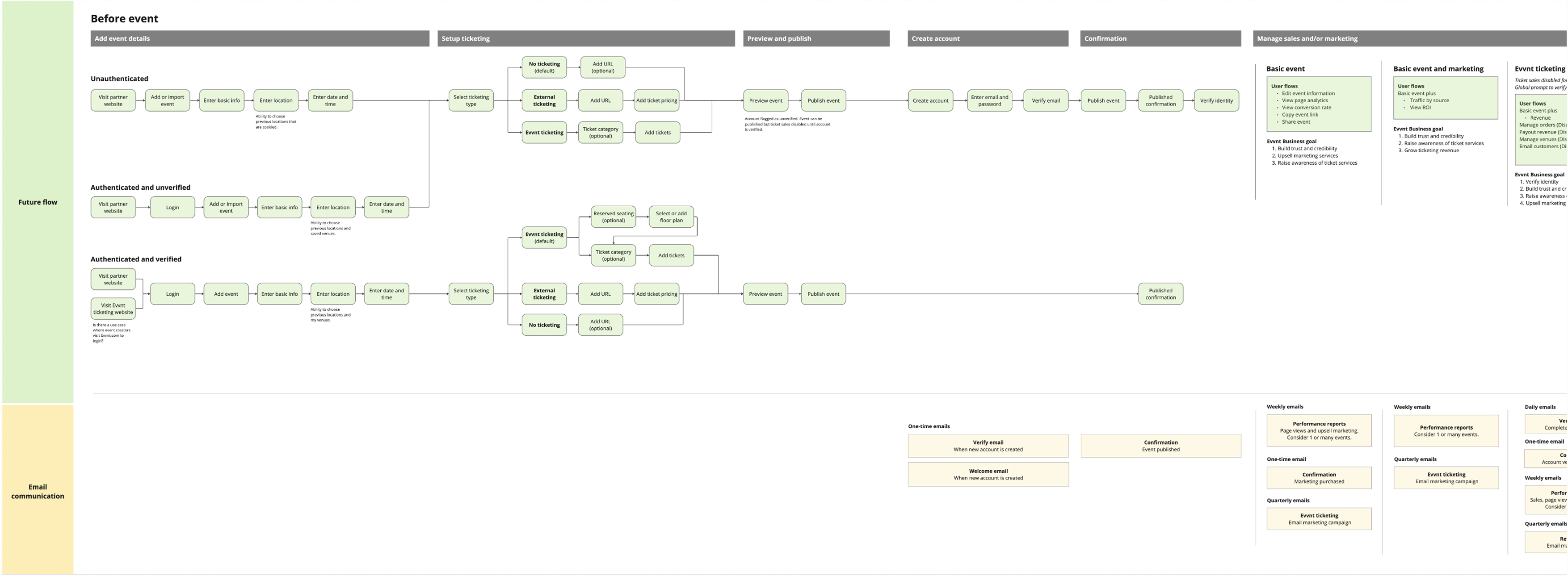
Platform Design Principles
Our UX strategy was built around unifying the Evvnt platform and enhancing the overall user experience through a set of clear, actionable design principles. By prioritizing usability, efficiency, and engagement, we created a more intuitive and scalable event management ecosystem.
Intuitive Navigation
Applied object-oriented UX to create a streamlined dashboard and logical workflows, reducing cognitive load.
Scalable Design System
Developed a comprehensive design system to ensure a visually appealing and cohesive interface.
Optimized Workflows
Simplified event creation and management processes to improve efficiency and reduce friction.
Clear and Effective Communication
Enhanced system feedback, email notifications, and alerts to keep users informed and engaged.
Role-Based Dashboards
Personalized content and tools based on user roles, ensuring relevance and improved productivity.
Performance-Driven Approach
Beyond design principles, our approach was performance-focused, using key UX and business metrics to guide and validate decisions:
- Retention & Engagement: Measured user adoption and long-term platform usage.
- Conversion Optimization: Improved upgrade rates for premium features.
- Efficiency & Usability: Reduced time-on-task for critical workflows.
- NPS Improvement: Addressed top detractors to enhance user satisfaction.
Redesigning the Event Dashboard
The event dashboard is one of the most important tools for event managers, providing key insights into ticket sales and traffic. Given its critical role, we focused extensively on improving its usability, ensuring it seamlessly combined disparate ticketing and marketing products into a single, cohesive experience.
Challenge: Cluttered UI, Poor Hierarchy, and Inefficient Workflows
Event managers struggled with outdated, cluttered dashboards that lacked a unified view of ticketing and marketing performance. The existing UI patterns increased cognitive load, making it difficult to track key metrics and take action efficiently.
Without a centralized system, users had to navigate between multiple tools, leading to wasted time and missed opportunities to optimize event success.
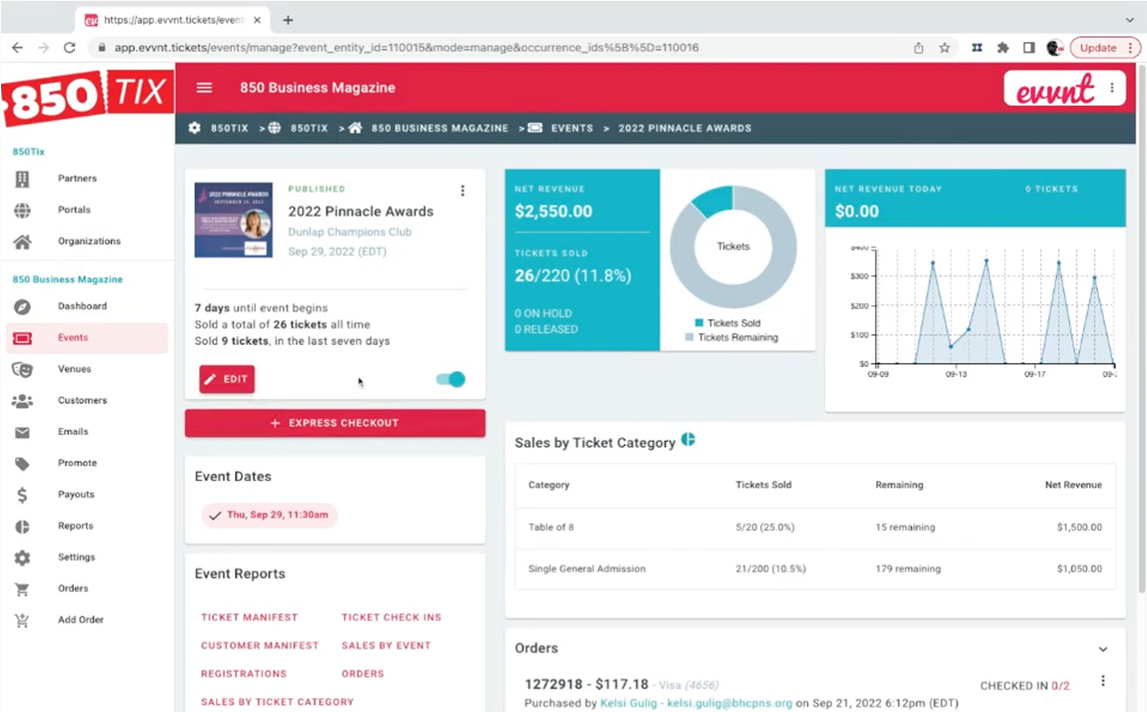
Process: Iterative Design and Testing for User-Centered Optimization
We adopted an iterative design approach, integrating continuous user feedback with structured design cycles. Usability tests helped us pinpoint pain points, rapid prototyping allowed for swift refinements, and validation with real event managers ensured the final design met their needs. Our key focus areas were improving information hierarchy, reducing friction, and aligning the dashboard with users' mental models.
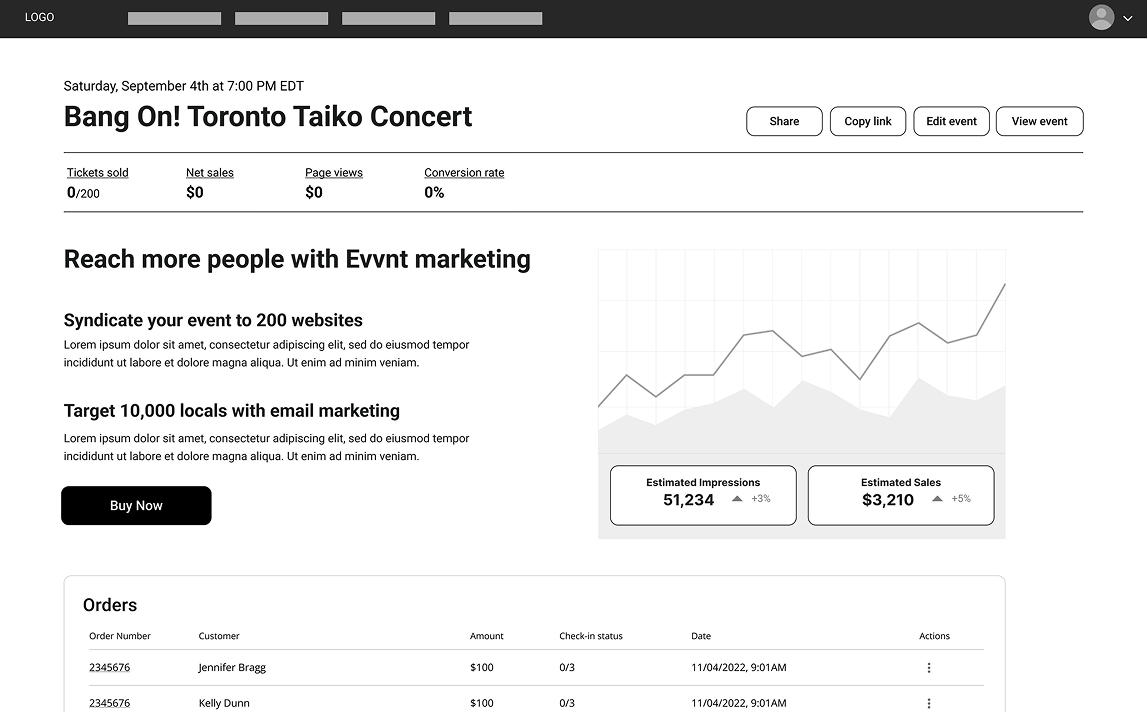
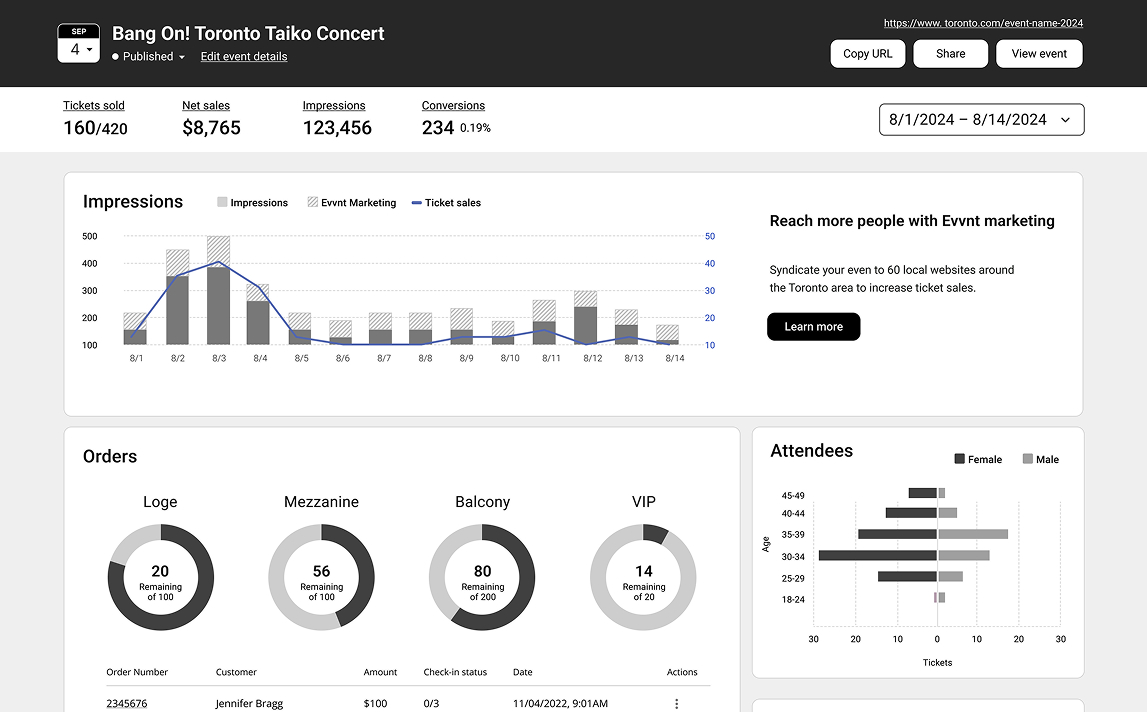
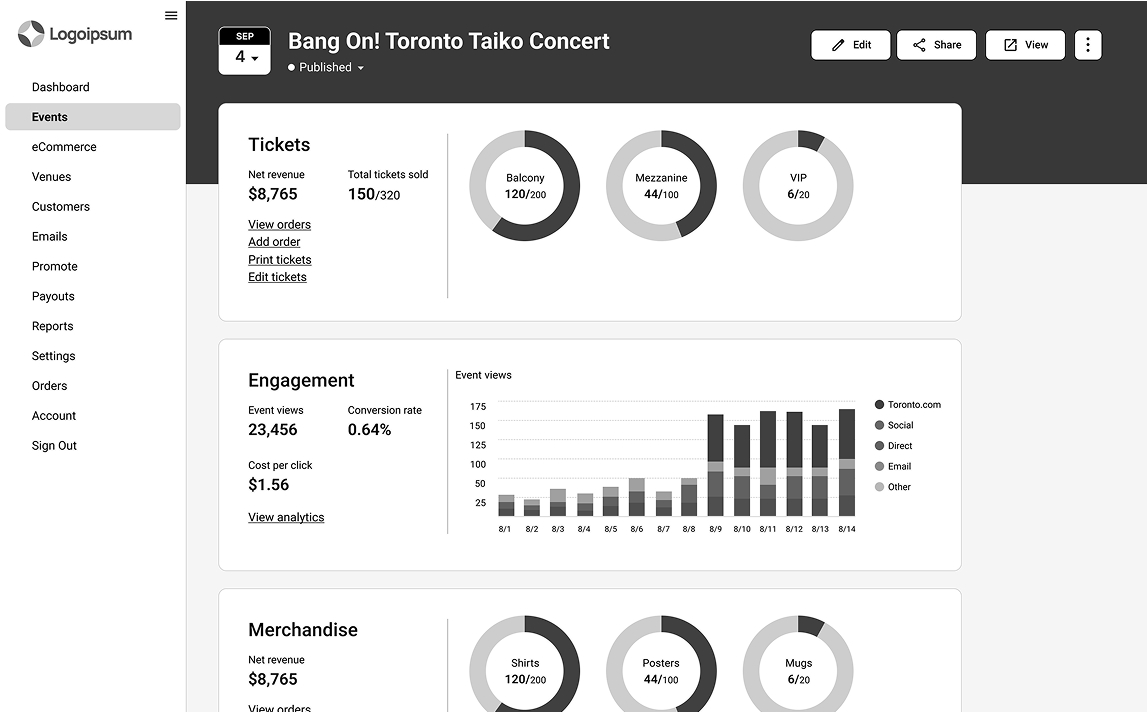
Solution: A Streamlined, Object-Oriented Dashboard
The redesigned dashboard leveraged object-oriented UX to present event data in an intuitive, action-driven format, seamlessly integrating ticketing and marketing insights into a single view. By incorporating actionable analytics, we provided real-time insights and key performance indicators in a digestible format.
An optimized information hierarchy ensured that relevant data was prioritized, reducing cognitive load and enabling faster decision-making. The result was a cohesive, user-friendly dashboard that empowered event managers to track performance efficiently and take informed action with confidence.
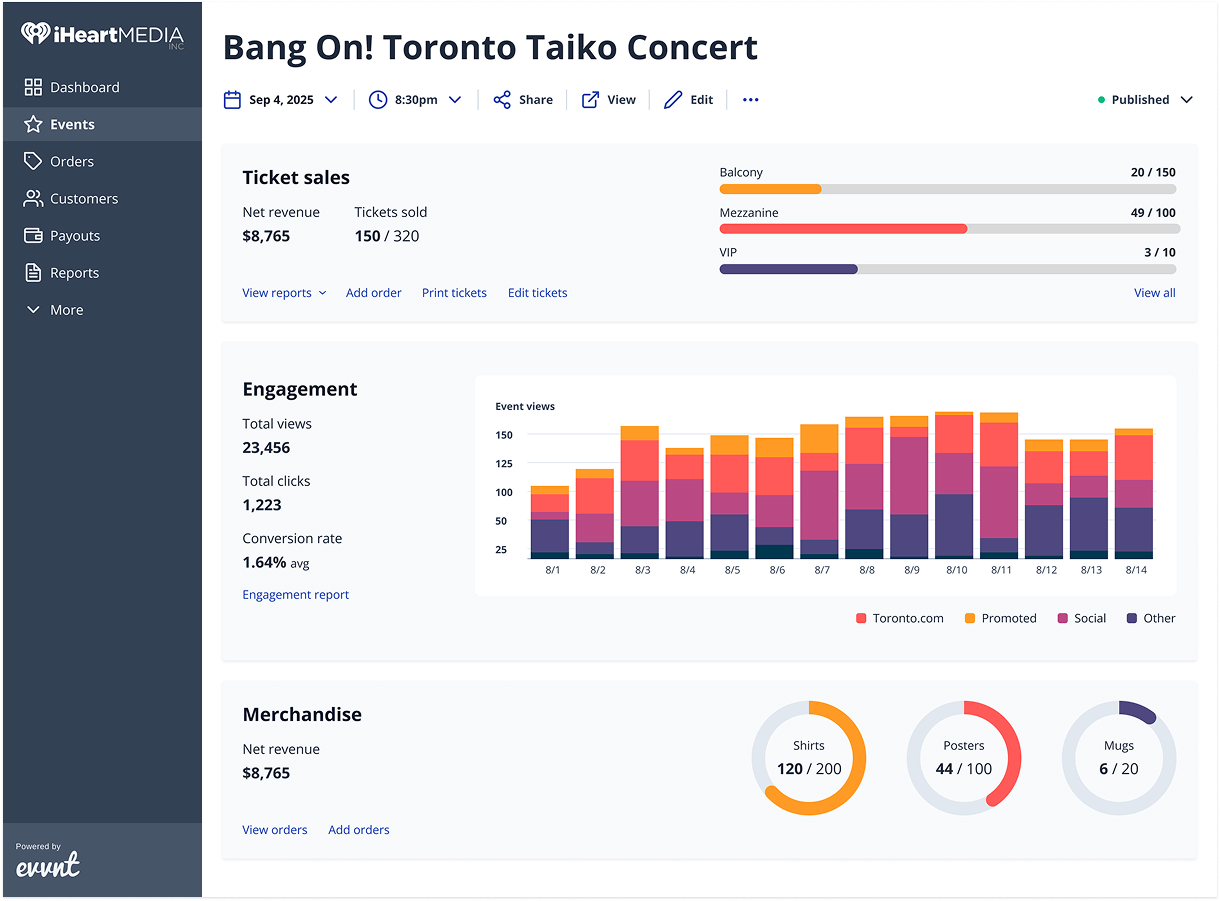
Driving Engagement and Growth Across the Platform
Our redesign efforts touched nearly every aspect of the Evvnt platform, creating a more seamless and intuitive experience. While the improvements were widespread, this section highlights key design changes that had the most significant impact on user engagement and business growth.
Optimizing the Acquisition Flow
Low premium-tier conversions and high drop-off rates signaled onboarding issues, so we used data analysis, usability testing, and A/B experiments to refine the acquisition journey, reduce friction, and build trust. Improvements included:
- Enhanced user trust and conversion through strategic upsell positioning and streamlined product tiers.
- Improved value proposition with refined content strategy and seamless payment integration.
- Increased platform credibility by incorporating strategic social proof elements.
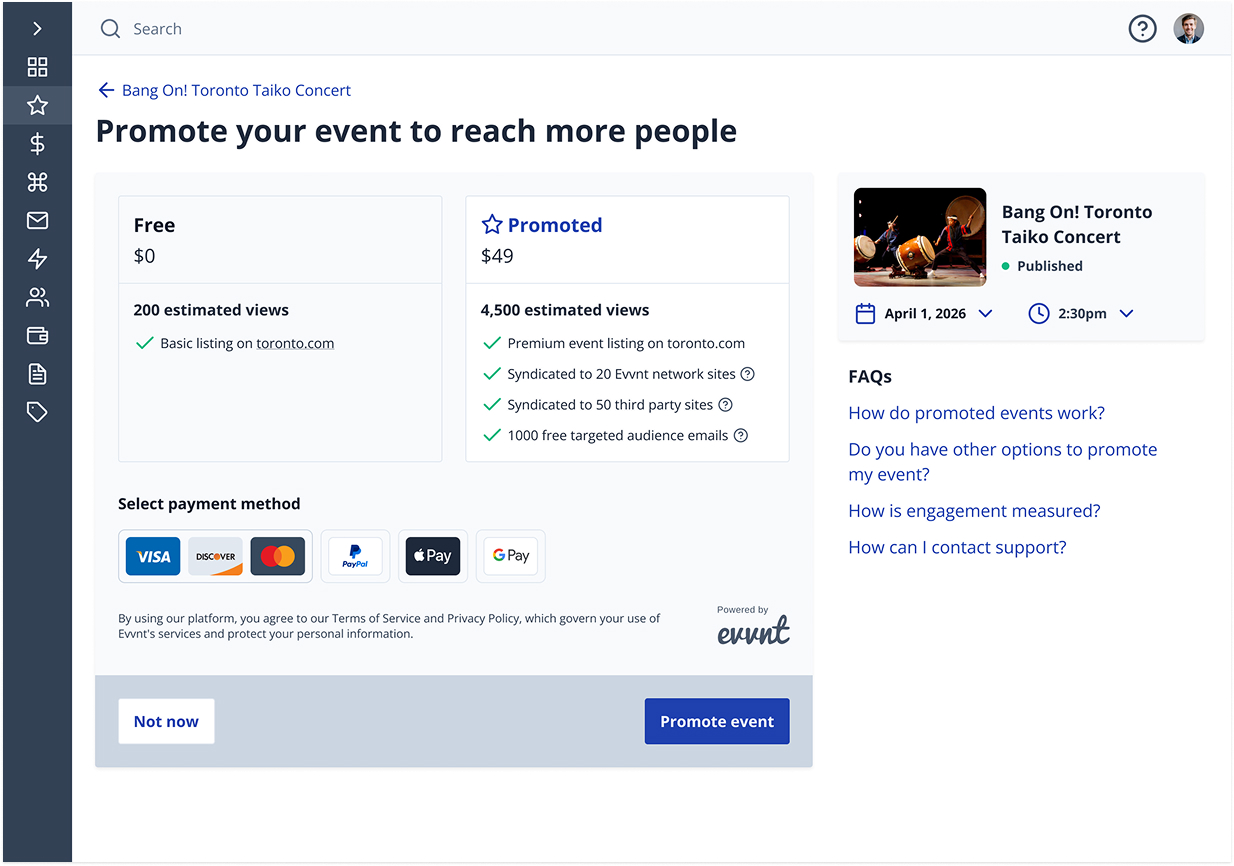
Simplifying Event Creation
We streamlined the event creation process to eliminate inefficiencies and improve the user experience. Taking a data-driven approach, we analyzed user pain points, conducted usability testing, and refined workflows to make event setup faster and more intuitive. Improvements included:
- Simplified recurring event creation and enhanced multi-schedule setup for a more flexible and efficient process.
- Reduced cognitive load with intelligent defaults, contextual guidance, and AI-powered content generation.
- Modernized UI with a cohesive design system to enhance accessibility and overall usability.
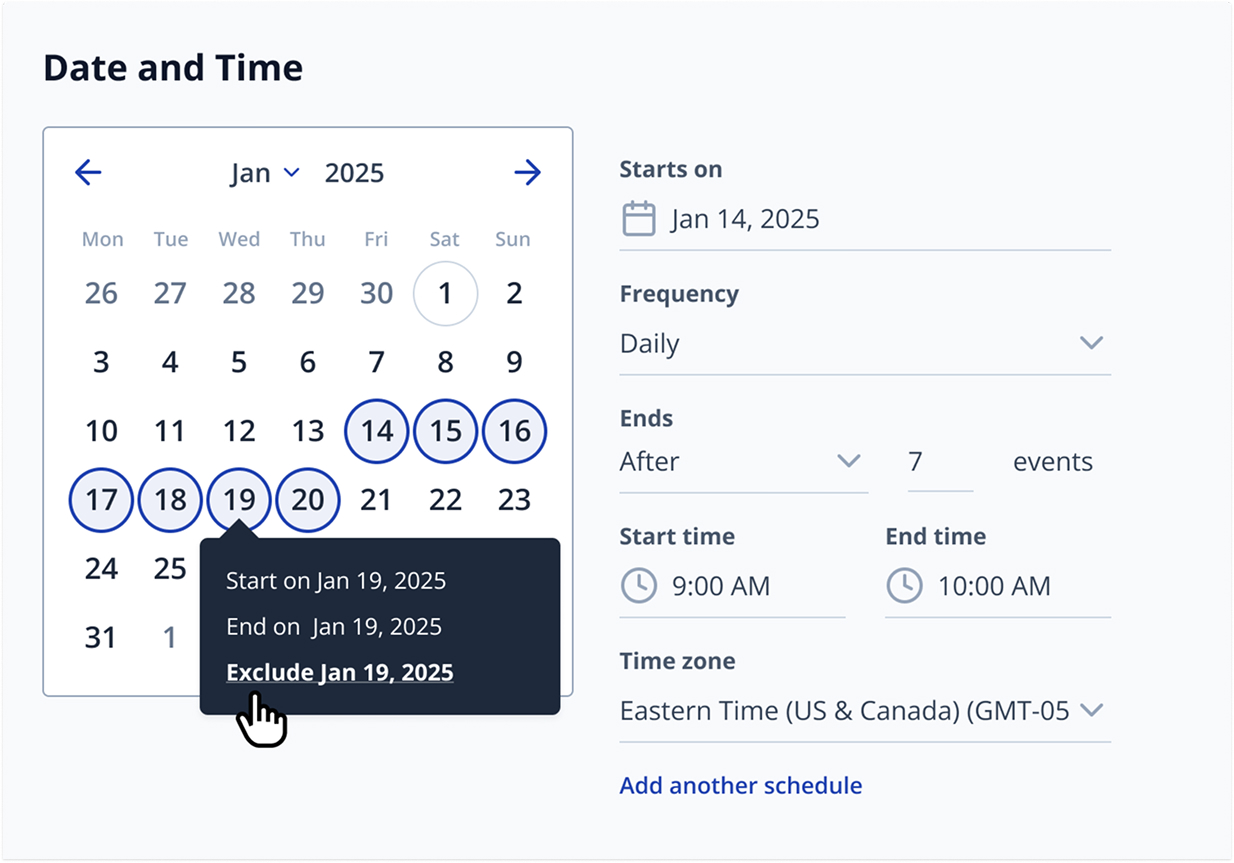
Personalizing the Home Page
To address low user engagement and poor information hierarchy, we redesigned the home page to provide a more personalized and intuitive experience. Improvements included:
- Prioritized event display and embedded analytics to enhance user productivity and decision-making.
- Improved information hierarchy and progressive disclosure to reduce cognitive load and surface relevant insights.
- Designed user onboarding to increase new user adoption and overall satisfaction.
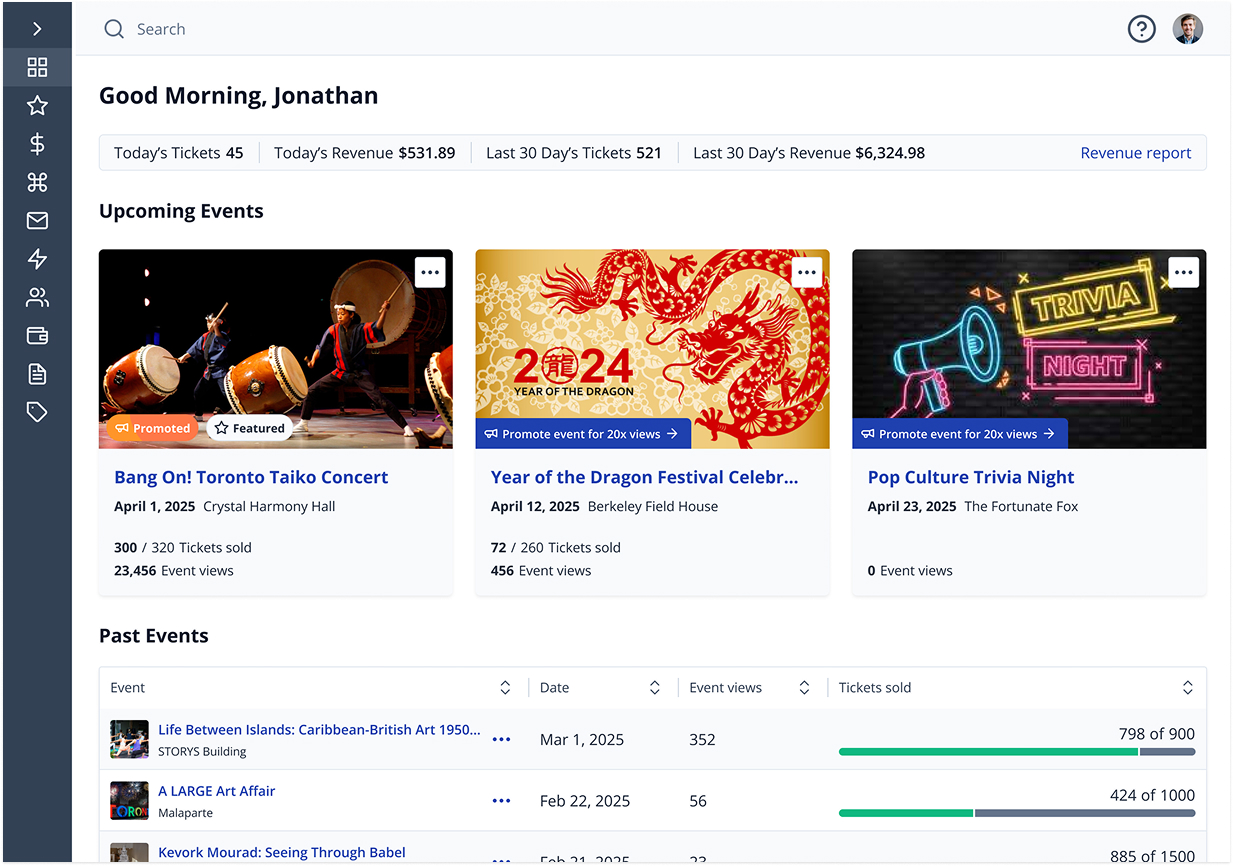
Driving Business Success with UX-Driven Innovation
Increased Premium Feature Adoption
Integrating ticketing and marketing tools into a unified platform led to a 12% increase in premium feature adoption, reducing cognitive load and enabling smarter decision-making through targeted, user-focused content.
Reduced Drop-Off Rates
Streamlining the event submission process eliminated friction points, resulting in an estimated 10-15% decrease in drop-off rates and improving the efficiency of the customer acquisition pipeline.
Improved Customer Satisfaction
By optimizing workflows and improving platform usability, we increased customer satisfaction scores by 15-20%, empowering users with a more intuitive, data-driven experience.
Boosted User Engagement
A more effective communication strategy, delivering timely, relevant updates, combined with enhanced usability and personalized content, led to a 5-10% increase in daily active users.
